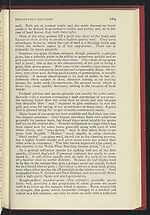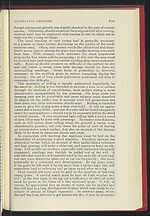1952-53
(724)
Download files
Complete book:
Individual page:
Thumbnail gallery: Grid view | List view

690
RECREATION GROUNDS
water supply. When closely looked for in turf it can be recognised
by the terminal glossy narrow shoot which becomes erect.
Annual meadow-grass
(Poa annua)
is quite comparable with the
best of the bents and fescues in respect of withstanding intense
defoliation. It is a common constituent of the vast majority
of lawns, bowling greens, golf greens and sports grounds in this
country. This is explained by its habit of flowering and seeding
under the keenest cutting and its powers of rapid colonisation.
Some of the serious objections to
a
Poa
turf are poor yellow colour
in early spring, the rather whiteish colour in the summer during
the time of maximum seeding, and also, susceptibility to disease,
especially Fusarium patch.
In view of its vegetative characteristics, smooth-stalked meadow-
grass
(Poa
pratensis)
has its uses for sports grounds. It withstands
dry condition because of its deeply penetrating root system and leaf
characters, and is thus useful for establishing in low rainfall districts
and on
dry soils.
Wavy hairgrass
(Aira flexuosa)
is to be found frequently on moor-
land soils which are too acid to support the finer grasses successfully.
Though it is as fine leaved when growing naturally as true creeping
red, or Chewing's fescue, it has no practical significance in sports
grounds though sometimes used for golf fairways on acid land.
THE CARE OF NEW-SOWN TURF
In themselves the troubles of newly-constructed turf may be
relatively negligible as compared, for example, with the major
problems which occur later in the life of a sports ground, lawn,
or bowling green. However, in that these latter problems are so
often referable to lack of care in the preparatory work and in the early
weeks of the new turf at a period in its history which is essentially
critical, it behoves the groundsman to exercise a little more than
the average care at this time.
The problems encountered on new turf may broadly be segregated
into two classes, dependent on whether the establishment was made
from seed or from turf ; in the latter case, which does not come
within the scope of this paragraph, the difficulties to contend with
are generally less serious. It is with the first that we are solely
concerned here.
Autumn sowing is often carried out in preferehce to sowing in
the spring for several reasons. In the first place there is generally
less risk of drought and secondly, the summer season is available
for fallowing.
Often, trouble is experienced through worm activity, especially
in autumn sowings. Some indication of this, however, should
have been forthcoming during the fallow stage in the ground's
preparation, and at that stage if it is thought necessary, treatment
with lead arsenate may be made. In treating thus, before the turf
is established, there should be no risk whatsoever of subsequent
damage ; experiments at St. Ives have proved that the sowing of
grass seeds in soil which has been treated with lead arsenate at
2
ozs.
per square yard results in no diminution of germinative capacity,
RECREATION GROUNDS
water supply. When closely looked for in turf it can be recognised
by the terminal glossy narrow shoot which becomes erect.
Annual meadow-grass
(Poa annua)
is quite comparable with the
best of the bents and fescues in respect of withstanding intense
defoliation. It is a common constituent of the vast majority
of lawns, bowling greens, golf greens and sports grounds in this
country. This is explained by its habit of flowering and seeding
under the keenest cutting and its powers of rapid colonisation.
Some of the serious objections to
a
Poa
turf are poor yellow colour
in early spring, the rather whiteish colour in the summer during
the time of maximum seeding, and also, susceptibility to disease,
especially Fusarium patch.
In view of its vegetative characteristics, smooth-stalked meadow-
grass
(Poa
pratensis)
has its uses for sports grounds. It withstands
dry condition because of its deeply penetrating root system and leaf
characters, and is thus useful for establishing in low rainfall districts
and on
dry soils.
Wavy hairgrass
(Aira flexuosa)
is to be found frequently on moor-
land soils which are too acid to support the finer grasses successfully.
Though it is as fine leaved when growing naturally as true creeping
red, or Chewing's fescue, it has no practical significance in sports
grounds though sometimes used for golf fairways on acid land.
THE CARE OF NEW-SOWN TURF
In themselves the troubles of newly-constructed turf may be
relatively negligible as compared, for example, with the major
problems which occur later in the life of a sports ground, lawn,
or bowling green. However, in that these latter problems are so
often referable to lack of care in the preparatory work and in the early
weeks of the new turf at a period in its history which is essentially
critical, it behoves the groundsman to exercise a little more than
the average care at this time.
The problems encountered on new turf may broadly be segregated
into two classes, dependent on whether the establishment was made
from seed or from turf ; in the latter case, which does not come
within the scope of this paragraph, the difficulties to contend with
are generally less serious. It is with the first that we are solely
concerned here.
Autumn sowing is often carried out in preferehce to sowing in
the spring for several reasons. In the first place there is generally
less risk of drought and secondly, the summer season is available
for fallowing.
Often, trouble is experienced through worm activity, especially
in autumn sowings. Some indication of this, however, should
have been forthcoming during the fallow stage in the ground's
preparation, and at that stage if it is thought necessary, treatment
with lead arsenate may be made. In treating thus, before the turf
is established, there should be no risk whatsoever of subsequent
damage ; experiments at St. Ives have proved that the sowing of
grass seeds in soil which has been treated with lead arsenate at
2
ozs.
per square yard results in no diminution of germinative capacity,
Set display mode to:
![]() Universal Viewer |
Universal Viewer | ![]() Mirador |
Large image | Transcription
Mirador |
Large image | Transcription
| Games and sports in the army > 1952-53 > (724) |
|---|
| Permanent URL | https://digital.nls.uk/248826920 |
|---|
| Description | 'Games and Sports in the Army' was an annual publication produced by the British War Office between the 1930s and 1960s. This included the Second World War. It outlines the rules and regulations for games and sports played by members of the armed forces. It features names and photographs of team members, and examples of contemporary advertising. |
|---|---|
| Shelfmark | GWB.52 |

